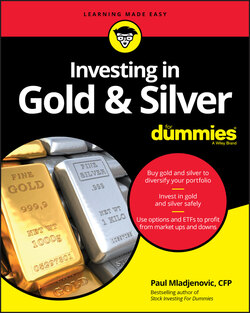Читать книгу Investing in Gold & Silver For Dummies - Paul Mladjenovic, Paul Mladjenovic, Ted Sudol - Страница 72
The bull and bear markets of 2000–2008
ОглавлениеNow we fast-forward to the 21st century. Stocks started the millennium at unsustainable highs. You may recall the “internet bubble” and the “tech stock bubble.” These deflated on their own, but the next whammy was the terrorist events on September 11, 2001, which sent the markets reeling downward. The public’s appetite for safety returned, and a gold bull market during 2000–2008 saw gold’s price go from $288 (January 2000) to breach the $1,000 level in March 2008 for a gain of 247 percent. It trended lower for 2008 in a modest and relatively brief bear market that lasted mere months (versus years in prior bear markets).
The 2008 financial crisis could, of course, be a whole book all by itself. The stock market and other paper assets (such as mortgages) had a historic crisis and crash. Virtually every major asset was down for the year except the U.S. dollar and gold:
The U.S. dollar was the world’s reserve currency, and it became a safe haven of sorts. Because paper assets and the world’s other currencies declined sharply, investors across the globe fled to financial safety.
Gold started the year at $857 (January 2, 2008) and ended the year at $883.60 for a modest percentage gain of about 3 percent.
Maybe 3 percent doesn’t sound great, but it’s spectacular when you compare it to the broad wreckage of most major investment assets that year. A good example is the hammering of major stocks in the Dow Jones (DJIA) that year. The DJIA started the year at 13,043 and ended 2008 at 8,776 — a brutal decline of 33 percent. Also, gold’s kid brother — I’m talking about silver — had a rough 2008. It was in the far corner sobbing quietly with a loss for the year at 25.6 percent. However, silver’s story gets better, and that narrative is in Chapter 6.
